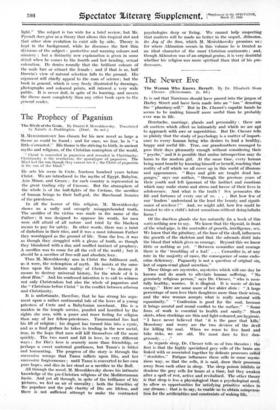The Meaning of Colour
Tao closely-reasoned and comprehensive work is not chiefly
concerned with the fascinating but too theoretic subject of Protective mimicry. It transcends its title, and in spite of it is more scientific than popular. Because it is more scientific, it is more, not less, interesting to the lay reader. So far from
developing super7Darwinian theories why this and that cater-
pillar and butterfly, this hunted bird or that hunting vermin come to resemble their surroundings Mr. Pycraft tells us very
clearly and simply and accurately of what sort colours. are, how they are produced, and how arranged, in fish, insects, birds, mammals and the rest. It is not that theories of how and why are excluded. Some of the views, especially where he denies the truth of natural selection as understood by Darwin, are elaborate and polemical ; but the gist of the book is a very absorbing and a very valuable account of the deve- lopment and uses of colour, of pigmentation, of prisms. Some of his best work has been done- on fishes. Now, most of us who have seen the scarcely credible variety of hue and shape in the 4 fish of a tropical sea have found our fidelity to Darwinism waver. The utter riot of colour and form proclaims the absence of controlling laws driAng species to retain the most useful variations. Colour has its way ; and in some fish the stuff that gives the colour is so sensitive to light that the many colours shift into many other colours "-as the ripple rocks the
•
light." The subject is too wide for a brief review, but Mr. Pycraft does give us a theory that allows this tropical riot and that other slow evolution to exist side by side. Theory is kept in the background, while he discusses the first thin divisions of the subject : protective and warning colours and mimicry ; but a distinctly new explanation is given in some detail when he comes to the fourth and last heading, sexual coloration. He denies roundly that the brilliant colours of the male lure or attract the female ; and if that is so, half Darwin's view of natural selection falls to the ground. His- argument will chiefly appeal to the man of science ; but the book in general, which is very freely illustrated by drawings, photographs and coloured prints, will interest- a very wide public. It is never dull, in spite of its learning, and covers the theme more completely than any other book open to the general reader.























































 Previous page
Previous page